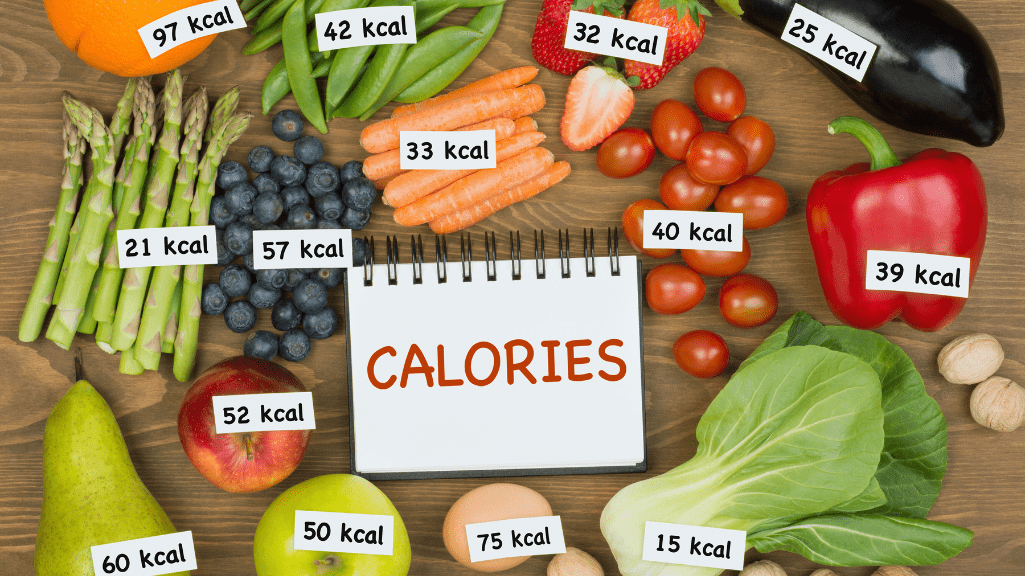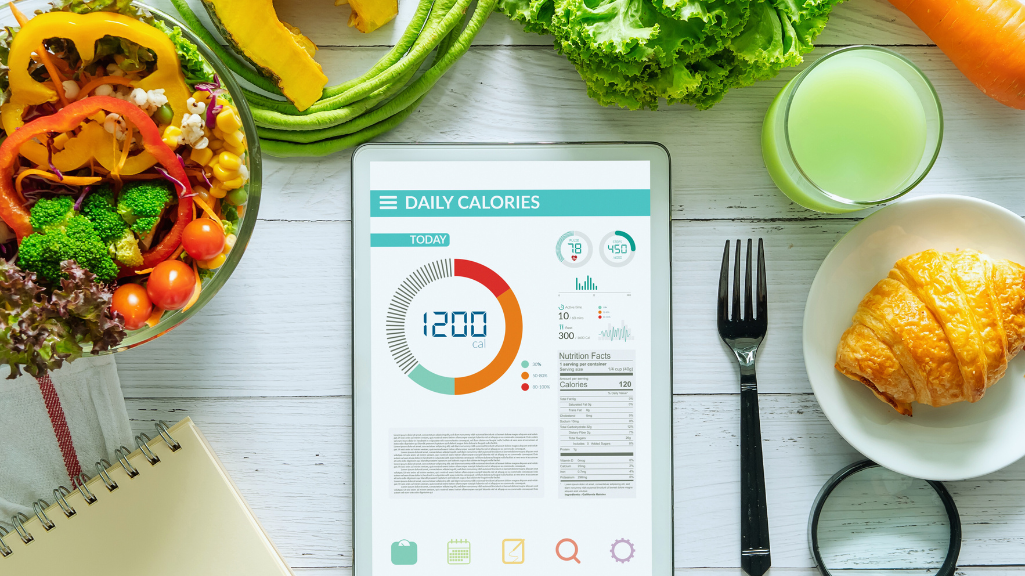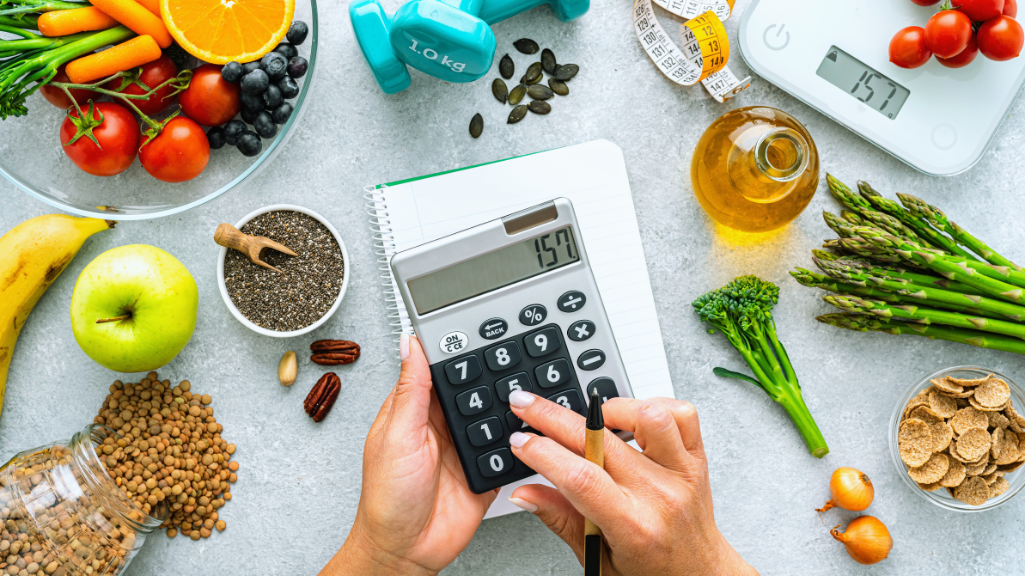The Importance of Nutrition: How to Track Calories and Macros for Fitness Success
In this article, we will provide a comprehensive guide on how to track calories and macros effectively, offering practical tips to overcome challenges and achieve your fitness goals.
You can spend hours in the gym, lifting weights, sweating through intense cardio, or perfecting your yoga poses, but without proper nutrition, you might be leaving gains on the table. Nutrition is the backbone of any fitness journey, and understanding how to fuel your body effectively can mean the difference between reaching your goals and feeling stuck. That’s where the concept of tracking calories and macros comes in.

What Are Calories and Macronutrients?
Calories are the units of energy your body uses to perform everything from breathing to running a marathon. Every bite of food contains calories, and consuming more or fewer calories than your body needs directly impacts weight gain, loss, or maintenance. Macronutrients, or “macros,” are the three main components of your diet: proteins, fats, and carbohydrates. Each plays a unique role in your body’s health and performance:
- Protein helps repair and build muscles, crucial for recovery after workouts.
- Fats provide long-lasting energy and support hormonal health.
- Carbohydrates are your body’s primary energy source, particularly for intense physical activity.
When you learn how to track calories and macros, you gain a clear understanding of what your body needs to thrive, whether your goal is weight loss, muscle gain, or improving overall fitness.
Why Should You Track Calories and Macros?
Tracking calories and macros isn’t just for professional athletes or bodybuilders. It’s a powerful tool for anyone who wants to take control of their fitness journey. Here’s why:
- Precision: It takes the guesswork out of eating. Instead of vague ideas about eating “healthy,” you know exactly how much to consume.
- Customization: Your needs are unique based on factors like age, gender, activity level, and fitness goals. Tracking allows you to tailor your diet specifically to you.
- Accountability: Seeing the numbers can help you stay on track and make adjustments as needed.
Learning how to track calories and macros doesn’t mean your meals become boring or restrictive—it means you have a roadmap to your goals.
Subscribe And Get Our Free E-Book:Unlocking The Power Of Nutrition-Supplements, Substitutes, and Superfoods!
A Step-by-Step Guide
This guide aims to help you understand the process of tracking calories and macros effectively so you can enhance your workout results. In upcoming sections, we’ll cover tools, techniques, and tips for making this practice as seamless as possible in your daily life. For now, let’s focus on the foundation.
- Start by Determining Your Goals
Are you looking to lose weight, gain muscle, or maintain your current physique? Knowing this will help you decide how many calories and what macro breakdown you should aim for. For example:- Weight loss typically requires a calorie deficit, consuming fewer calories than your body burns.
- Muscle gain often calls for a calorie surplus, eating more than you burn to fuel muscle growth.
- Understand Your Baseline
Before making any changes, it’s crucial to know where you’re starting from. You can use online calculators or apps to estimate your Total Daily Energy Expenditure (TDEE), which is the number of calories your body needs to maintain your current weight. Once you have this number, you can adjust it based on your goals. - Learn the Basics of Macros
Not all calories are created equal. Eating 2,000 calories of protein, fats, and carbs in the right proportions will have a much different effect than 2,000 calories of junk food. A common starting point for many fitness enthusiasts is a macro split of 40% carbohydrates, 30% protein, and 30% fats, but this can vary depending on your goals.
When you learn how to track calories and macros, you’ll notice how much clarity this brings to your diet. You may realize you’ve been eating too little protein or too many carbs, and small tweaks can make a big difference.
Setting the Stage for Success
Tracking might sound daunting at first, but it’s a skill like any other. With practice, it becomes second nature. Tools like food scales, nutrition apps, and even simple pen-and-paper logs can make the process easier. In the next part of this guide, we’ll explore these tools in detail and offer tips to simplify tracking without feeling overwhelmed.
By understanding how to track calories and macros, you’re equipping yourself with one of the most effective tools for transforming your fitness journey. This practice isn’t about perfection—it’s about learning what works for your body and staying consistent.
How To Calculate Macros-Fat Loss And Muscle Gain Video
Why Understanding How to Track Calories and Macros is Essential for Fitness Success
Understanding how to track calories and macros is a crucial step in achieving your fitness goals. It’s not just about following a diet—it’s about understanding what your body needs and how to provide it. Nutrition plays a direct role in energy, recovery, and overall progress, making tracking an invaluable tool for anyone serious about fitness. Let’s break down why this approach is so effective and rooted in science.

How Calories Influence Energy Balance
At the heart of every fitness goal is the concept of energy balance. Calories are the fuel your body uses for every function, from breathing to lifting weights. Whether you’re looking to lose fat or gain muscle, managing your energy balance is essential:
- Caloric Surplus: To build muscle, your body needs to be in a caloric surplus, meaning you consume more calories than you burn. This extra energy supports muscle repair and growth after workouts.
- Caloric Deficit: For fat loss, you need to create a caloric deficit by consuming fewer calories than your body requires. This forces your body to use stored fat for energy, leading to weight loss.
When you know how to track calories and macros, you can fine-tune your energy intake to align with your goals. This precision ensures you’re not eating too much or too little, optimizing your progress.
The Role of Macronutrients
Calories are just one piece of the puzzle. Macronutrients—protein, carbohydrates, and fats—each have a unique role in supporting your fitness journey. Here’s why they matter:
- Protein: This macronutrient is vital for repairing and building muscle tissue. Whether you’re recovering from a tough workout or trying to increase muscle mass, protein should be a key part of your diet.
- Carbohydrates: Carbs are your body’s primary source of energy, particularly during high-intensity activities. They fuel your workouts and help replenish glycogen stores, so you’re ready for the next session.
- Fats: While fats are calorie-dense, they’re essential for hormone production and overall health. Healthy fats also provide a long-lasting energy source, especially for endurance activities.
Balancing these macronutrients based on your goals is the cornerstone of effective nutrition. Learning how to track calories and macros ensures that you’re not just eating the right number of calories but also getting the right breakdown of nutrients.
The Benefits of Tracking
Tracking isn’t just about numbers—it’s about gaining insights into your habits and making informed choices. Here are some of the major benefits:
1. Better Workout Performance
When you fuel your body correctly, your workouts improve. Eating the right balance of macros provides the energy you need to perform at your best and recover effectively. For example, consuming carbs before a workout can boost energy, while eating protein afterward aids recovery. Tracking ensures you’re giving your body what it needs when it needs it.
2. Faster Achievement of Fitness Goals
Whether your goal is fat loss, muscle gain, or maintenance, tracking allows you to progress more efficiently. For example:
- If you’re aiming to lose fat, tracking helps you stay within your caloric deficit without cutting too much, which could lead to fatigue or muscle loss.
- For muscle gain, tracking ensures you’re consuming enough calories and protein to support growth without adding unnecessary fat.
Knowing how to track calories and macros helps you stay on course and make adjustments when needed.
3. Awareness of Eating Habits
Tracking your food gives you a clear picture of your eating habits. You might realize you’re eating too little protein, over-consuming fats, or relying on empty-calorie snacks. This awareness is the first step in making meaningful changes. With time, you’ll develop a better understanding of portion sizes and nutrient density, even if you’re not tracking every meal.
Making Tracking Work for You
Tracking doesn’t have to be overwhelming. Start small by logging just a few meals or focusing on one macronutrient at a time. Apps like MyFitnessPal or Cronometer can make the process more convenient by providing calorie and macro information for thousands of foods. The key is consistency—logging regularly gives you the most accurate picture of your intake.
Understanding how to track calories and macros is a game-changer for anyone serious about fitness. It bridges the gap between effort in the gym and results in your physique. By managing your energy intake and macronutrient balance, you’ll not only improve your performance but also achieve your goals faster and more sustainably.
Stay tuned for the next section, where we’ll dive into practical tips for making tracking a seamless part of your routine!
Understanding Calories and Macronutrients: How to Track Calories and Macros Effectively
When it comes to fitness, understanding how to track calories and macros is crucial for achieving your goals. To start, it’s important to know what calories and macronutrients are, their roles in energy and performance, and how to balance them based on your objectives.

What Are Calories?
Calories are a measure of energy. Your body uses calories from food to fuel everything from breathing and thinking to exercising. The number of calories you need daily depends on:
- Basal Metabolic Rate (BMR): The calories your body burns at rest to maintain basic functions like breathing and organ function.
- Physical Activity: Any movement, including workouts and daily tasks, increases your calorie burn.
- Thermic Effect of Food (TEF): The energy your body uses to digest and process food.
Tracking calories helps you create a caloric surplus (eating more than you burn) for muscle gain or a caloric deficit (eating less than you burn) for fat loss. Understanding how to track calories and macros ensures that your energy intake matches your goals.
What Are Macronutrients?
Macronutrients, or macros, are the three main nutrients your body requires in large amounts: protein, carbohydrates, and fats. Each plays a unique role in your health and fitness.
Protein: The Building Block of Muscle
Protein is essential for repairing and building muscle tissue, especially after workouts. It also helps keep you feeling full, which is beneficial for fat loss.
- Daily Recommendations: Aim for 0.8 to 1 gram of protein per pound of body weight if you’re active. For example, a 150-pound individual should consume 120–150 grams of protein daily.
- Best Sources: Chicken, fish, eggs, dairy, tofu, lentils, and protein powders.
Carbohydrates: Your Primary Energy Source
Carbohydrates provide the energy you need for workouts and daily activities. They are especially important for pre- and post-workout meals to fuel performance and aid recovery.
- Daily Recommendations: The amount of carbs depends on your activity level and goals, but they typically make up the largest percentage of your macros for most people.
- Best Sources: Whole grains, fruits, vegetables, rice, oats, and sweet potatoes.
Fats: Essential for Hormone Health
Fats play a vital role in maintaining hormonal balance and overall health. While they are calorie-dense, they provide long-lasting energy, especially for lower-intensity activities.
- Daily Recommendations: Healthy fats should make up 20–35% of your daily calorie intake.
- Best Sources: Avocado, nuts, seeds, olive oil, and fatty fish like salmon.
Example Macro Ratios for Different Goals
The balance of macros you need varies based on your fitness objectives:
- For Muscle Gain: A common starting point is 40% carbs, 30% protein, and 30% fats. This provides the energy needed for intense workouts while supporting muscle repair and growth.
- For Fat Loss: Many people opt for a higher protein intake to preserve muscle mass while in a caloric deficit. A common ratio is 30% carbs, 40% protein, and 30% fats, but variations may depend on personal preference and activity level.
How to Use This Knowledge
When you know how to track calories and macros, you can customize your diet to suit your needs. For example, if your goal is fat loss, you might prioritize lean proteins and manage your carb intake carefully. If you’re aiming for muscle gain, you’ll focus on a calorie surplus with plenty of carbs to fuel your workouts.
Understanding the role of calories and macronutrients is the foundation for making smarter food choices. In the next section, we’ll explore practical strategies and tools for seamlessly incorporating tracking into your daily routine.
Step-by-Step Guide: How to Track Calories and Macros for Fitness Success
Tracking how to track calories and macros is a crucial part of any fitness journey. Whether your goal is to lose fat, build muscle, or maintain your current weight, having a clear and effective strategy is essential. Below, we’ll break down a step-by-step guide to help you understand how to track calories and macros to achieve your fitness goals.

Step 1: Define Your Fitness Goal
The first step in learning how to track calories and macros is to establish what you want to achieve. Are you looking to lose fat, build muscle, or simply maintain your current weight? Each goal requires a different approach in terms of calorie intake and macronutrient ratios.
- Fat Loss: Creating a caloric deficit by consuming fewer calories than you burn helps you shed fat.
- Muscle Gain: A caloric surplus ensures you have enough energy to build and repair muscle tissue.
- Maintenance: Keeping your calorie intake in balance with your energy expenditure to maintain your current weight.
Understanding these concepts is key to tracking effectively. For example, if you aim to build muscle, you’ll be in a caloric surplus, consuming more calories than your body burns. Conversely, if fat loss is your goal, you’ll focus on a caloric deficit, consuming fewer calories than you burn.
Step 2: Calculate Your Calorie Needs
To determine how much food you need to meet your goals, you must calculate your calorie needs. This is typically done using terms like BMR (Basal Metabolic Rate) and TDEE (Total Daily Energy Expenditure).
- BMR refers to the number of calories your body needs at rest to maintain basic bodily functions.
- TDEE accounts for your activity level, including exercise, to give a more accurate daily calorie requirement.
There are various tools and formulas available to calculate your TDEE, including:
- The Harris-Benedict Equation
- Online calculators (e.g., MyFitnessPal, TDEE calculators)
Once you’ve determined your TDEE, you can adjust based on your fitness goals. For fat loss, subtract about 500 calories from your TDEE to create a deficit. For muscle gain, add about 500 calories to create a surplus.
Step 3: Set Your Macro Ratios
Once you have your calorie goal, the next step is to break that down into macronutrients. This helps ensure you’re getting the right balance of protein, carbohydrates, and fats. Here’s how you can calculate your macros:
Example Calculation
If your calorie goal is 2,000 calories per day and you’re aiming for a ratio of 40% carbohydrates, 30% protein, and 30% fats:
- Carbohydrates: 800 calories (200g)
- Protein: 600 calories (150g)
- Fats: 600 calories (67g)
Using a food scale or a nutrition app like MyFitnessPal can simplify this process and ensure accuracy. It’s important to track how to track calories and macros consistently so that you stay aligned with your goals.
Step 4: Track Your Food Intake
The next step in how to track calories and macros is keeping a detailed log of what you eat. This can be done through various methods, but tools like food scales and nutrition apps are particularly effective.
- Apps like MyFitnessPal, Cronometer, and others allow you to input your meals and provide insights into macronutrient breakdowns.
- Food scales help measure portion sizes accurately, preventing over- or under-consumption.
It’s important to track everything, even small snacks or condiments, to get the most accurate picture of your daily intake. Skipping these can lead to underestimating your total calorie and macro consumption, which can affect your progress.
Step 5: Monitor and Adjust
Tracking is not a one-time process. To see real progress, you need to consistently monitor your results and make adjustments when necessary.
- Consistency is key. Track your intake regularly to spot trends and identify areas for improvement.
- Adjust your calorie and macro targets based on how your body responds. If progress stalls after a few weeks, consider recalculating your calorie and macro needs.
- Performance Indicators: Look for changes in weight, energy levels, and workout performance. These provide valuable feedback that can guide adjustments.
By understanding how to track calories and macros, you empower yourself to take control of your fitness journey. Whether you’re looking to lose weight, build muscle, or maintain, this structured approach ensures you stay on the right path toward achieving your goals.
Maximizing Results: Tips for How to Track Calories and Macros Effectively
Tracking how to track calories and macros is a powerful tool for achieving your fitness goals, but knowing how to optimize this process is equally important. By implementing smart strategies, you can maximize your results and ensure that your efforts pay off. Here are some practical tips for getting the most out of your tracking journey.
Plan Meals Ahead
One of the most effective ways to stay consistent with how to track calories and macros is by planning your meals in advance. Meal prep helps streamline the process, making it easier to adhere to your macro goals. When you have pre-prepared meals, you reduce the chances of making impulsive, less healthy food choices that can throw off your daily totals.
- Batch cooking meals and portioning them ensures you always have something on hand that fits your macro breakdown.
- This also helps manage time better and minimizes decision fatigue throughout the week.
Planning meals not only simplifies tracking but also improves overall adherence to your nutritional goals.

Focus on Nutrient-Dense Foods
When tracking how to track calories and macros, it’s crucial to prioritize nutrient-dense foods. These are foods that provide essential vitamins, minerals, and other beneficial nutrients without excessive calories from processed ingredients.
- Whole foods like lean meats, vegetables, fruits, whole grains, nuts, and seeds should be the foundation of your diet.
- Avoid “empty” calories from sugary snacks, refined grains, and heavily processed foods, as these do little to nourish your body or fuel your workouts effectively.
By focusing on nutrient-dense choices, you ensure that you’re getting the most out of your calorie and macro intake. These foods support both performance and recovery, which are critical for progress.
Use Supplements Wisely
While whole foods should make up the majority of your diet, supplements can be a helpful tool to meet specific macro goals when needed. Protein powders, creatine, BCAAs, and other supplements can complement your efforts when food intake alone isn’t sufficient.
- Protein powder is especially useful for individuals with high protein requirements to meet muscle-building or fat-loss goals.
- Supplements should be used as a supplement, not a replacement, for a balanced diet rich in whole foods.
When incorporating supplements, always ensure they fit within your overall macro goals, and avoid over-relying on them for nutrition.
Hydration
Hydration plays a critical role in optimizing how to track calories and macros. Water supports digestion, nutrient absorption, and overall performance.
- Proper hydration helps maintain energy levels and supports recovery, making it essential for both workouts and daily activities.
- Aim to drink at least 8-10 glasses of water per day, adjusting based on activity level and personal needs.
Staying hydrated ensures that your body functions efficiently, reducing the risk of fatigue and aiding in the recovery process.
How to Track Calories and Macros: Track Pre- and Post-Workout Nutrition
Timing your nutrition around workouts is another important component of maximizing results with how to track calories and macros. Pre- and post-workout meals can significantly impact performance and recovery.
- Pre-workout nutrition provides the energy needed for a productive session, while post-workout nutrition helps replenish glycogen stores and repair muscle tissue.
- Consider incorporating a mix of carbohydrates and proteins in both meals to optimize results.
By paying attention to when and what you eat around workouts, you can maximize your energy output and recovery.
Overcoming Challenges: How to Track Calories and Macros Effectively
Tracking how to track calories and macros can come with its own set of challenges. While it is an effective tool for achieving fitness goals, there are moments when it may feel overwhelming or inaccurate. By addressing these challenges and adopting a balanced approach, you can continue making progress without feeling stressed or discouraged.
Dealing with Inaccuracies
One of the most common challenges when tracking how to track calories and macros is dealing with inaccuracies, especially when eating out or estimating portion sizes.

- Eating out often makes it harder to gauge the exact number of calories and macronutrients consumed. Portions can be larger, and it’s difficult to control cooking methods or specific ingredients.
- To minimize errors, try to stick to healthier restaurant options or request modifications like grilled over fried, and avoid high-calorie dressings or sauces.
- For portion estimation, always aim to use visual cues and tools such as a food scale or apps like MyFitnessPal to make educated guesses more accurate.
While some inaccuracies are inevitable, focusing on consistency over time will help refine your approach.
How to Track Calories and Macros: Avoiding Obsession
Another challenge is avoiding obsession with tracking how to track calories and macros. It’s easy to become overly fixated on hitting exact numbers, which can lead to unnecessary stress and disordered eating patterns.
- Remember that tracking is a tool, not a strict regimen. It should support your goals, not dominate your life.
- Strive for a healthy balance where tracking helps you understand your nutrition, but isn’t a source of anxiety.
- Focus on intuitive eating and listen to your body’s hunger and fullness cues to create a sustainable and enjoyable relationship with food.
Over-reliance on tracking can detract from the joy of eating and overall well-being. Staying flexible is essential.
Staying Motivated
Staying motivated is another critical aspect of overcoming challenges in how to track calories and macros. Progress may be slow at times, but celebrating small wins along the way keeps you engaged and driven.
- Track not just numbers, but also improvements in performance, energy, or how you feel day-to-day.
- Celebrate milestones, whether that’s hitting a protein goal or seeing a decrease in body fat percentage. These achievements provide encouragement and momentum to keep pushing forward.
- Recognize that setbacks are normal, but they shouldn’t derail your efforts. Use them as learning opportunities to refine your approach.
Keeping a positive mindset and acknowledging progress is key to sustaining long-term motivation.
By understanding these challenges and implementing strategies to overcome them, tracking how to track calories and macros can be a seamless and rewarding process that supports your fitness journey. Let me know if you need any further adjustments!
How to Track Calories and Macros: Average Calorie Expenditure for Common Physical Activities
| Activity | Average Calories Burned (per hour) | Intensity Level | Muscle Groups Targeted | Potential Health Benefits |
|---|---|---|---|---|
| Running (6 mph) | 600 – 700 | High | Legs, Core | Cardiovascular health, weight loss, endurance |
| Bicycling (moderate) | 450 – 550 | Moderate | Legs, Glutes, Core | Cardiovascular health, muscle tone, joint health |
| Swimming (general) | 400 – 500 | Moderate | Full Body | Full-body workout, joint-friendly, improves flexibility |
| Walking (3.5 mph) | 250 – 300 | Low | Legs, Core | Cardiovascular health, weight maintenance, stress reduction |
| Weightlifting | 180 – 250 | Variable | Full Body | Muscle growth, bone density, metabolic rate increase |
| Yoga | 200 – 300 | Low to Moderate | Core, Flexibility | Flexibility, mental health, muscle tone |
| Aerobics | 450 – 550 | Moderate to High | Full Body | Cardiovascular health, weight loss, improved coordination |
| Dancing | 300 – 400 | Variable | Full Body | Cardiovascular health, improved coordination, fun |
| Hiking | 350 – 450 | Moderate | Legs, Core, Back | Cardiovascular health, muscle tone, mental health |
| Tennis | 500 – 600 | High | Full Body | Cardiovascular health, agility, coordination |
| Rowing (moderate) | 400 – 500 | Moderate | Back, Arms, Core | Full-body workout, cardiovascular health, muscle tone |
| Jumping Rope | 600 – 700 | High | Legs, Core, Shoulders | Cardiovascular health, agility, weight loss |
| Gardening | 250 – 350 | Low | Full Body | Physical activity, stress reduction, flexibility |
| House Cleaning | 175 – 250 | Low | Full Body | Physical activity, household productivity, flexibility |
Explanation of The Chart: How to Track Calories and Macros
- Intensity Level:
- Low: Suitable for beginners and low-impact exercise routines.
- Moderate: Engages multiple muscle groups and elevates heart rate.
- High: Intense activities that significantly raise heart rate and energy expenditure.
- Muscle Groups Targeted:
- Identifies the primary muscle groups involved in the activity.
- Potential Health Benefits:
- Highlights the overall health benefits, such as improving cardiovascular health, mental well-being, and specific fitness goals like weight loss or muscle tone.
Final Thoughts: Mastering How to Track Calories and Macros
As we reach the final stretch of our journey through the vast landscape of fitness, one thing becomes crystal clear: understanding how to track calories and macros is not just a tool—it’s a key that unlocks your potential. Whether you’re striving for weight loss, muscle gain, or simply a healthier lifestyle, mastering this skill empowers you to take control of your nutrition, your body, and ultimately, your destiny.
The question of “how to track calories and macros” isn’t merely about numbers on a screen or scribbles in a journal; it’s about crafting a personalized roadmap to success. It’s the compass that guides you through the stormy seas of misinformation, the lifeline that pulls you back when the tides of temptation threaten to sweep you away, and the fuel that drives you forward when the journey feels long and the destination distant.

For those just starting, the idea of meticulously tracking every bite and every nutrient might seem daunting. But remember, every great journey begins with a single step. By understanding how to track calories and macros, you lay the foundation for a lifetime of informed decisions. You transform your relationship with food from one of mere consumption to one of nourishment, awareness, and respect.
And let’s not forget the power of consistency. In the quest for fitness, there are no shortcuts, no magic pills, no one-size-fits-all solutions. But with the knowledge of how to track calories and macros, you gain something far more valuable: the ability to adapt, to pivot, and to progress steadily toward your goals, no matter the obstacles in your path.
Imagine yourself not just surviving the journey but thriving—celebrating every milestone, learning from every setback, and growing stronger with each passing day. Tracking calories and macros becomes not a chore, but a daily ritual, a testament to your commitment to becoming the best version of yourself. It’s about fueling your body with the right nutrients, in the right amounts, to support the life you want to live.
FAQ Section: How to Track Calories and Macros
1. What does it mean to track calories and macros?
Tracking calories and macros involves recording the energy (calories) and macronutrients—proteins, fats, and carbohydrates—you consume daily. This process helps you align your eating habits with your fitness goals, whether it’s weight loss, muscle gain, or maintaining a healthy lifestyle. Learning how to track calories and macros enables you to personalize your nutrition.
2. Why is it important to track calories and macros?
Tracking calories and macros gives you control over your diet, helping you understand how food impacts your body. Whether you aim to lose weight, build muscle, or maintain health, knowing how to track calories and macros allows you to make informed decisions and meet your goals effectively.
3. How do I start tracking calories and macros?
Start by calculating your Basal Metabolic Rate (BMR) and Total Daily Energy Expenditure (TDEE). Then, use a calorie-tracking app to log your meals and portion sizes. To master how to track calories and macros, you’ll need to familiarize yourself with reading nutrition labels and estimating portion sizes accurately.
4. Do I need to track calories and macros forever?
Not necessarily. Tracking serves as a tool to build awareness of your eating habits. Once you understand portion sizes and food quality, you can transition to a more intuitive approach while maintaining the principles of how to track calories and macros.
5. Can I still enjoy cheat days while tracking calories and macros?
Yes! Incorporating cheat days is possible as long as they’re planned and moderate. Knowing how to track calories and macros helps you balance indulgent meals with your overall nutrition goals.
6. What are the common challenges in tracking calories and macros?
Challenges include accurately estimating portions, dining out, and resisting over-reliance on numbers. However, learning how to track calories and macros with tools like apps, food scales, and guides can make the process easier and more enjoyable.
7. What foods should I prioritize when tracking calories and macros?
Focus on nutrient-dense foods like lean proteins, whole grains, fruits, vegetables, and healthy fats. These foods make it easier to stick to your calorie goals while meeting macronutrient needs. Understanding how to track calories and macros ensures you’re getting quality nutrients, not just empty calories.
8. Is it better to focus on calories or macros?
Both are important. Calories determine energy intake, while macronutrients influence how your body uses that energy. Learning how to track calories and macros ensures you balance both for optimal health and fitness results.
9. How can tracking calories and macros help with weight loss?
To lose weight, you need to create a calorie deficit. Tracking calories and macros helps you monitor your intake and ensure you’re eating fewer calories than your body burns while still getting the right nutrients.
10. What tools can I use to track calories and macros?
Popular tools include mobile apps like MyFitnessPal, Cronometer, and Lose It!, as well as food scales and wearable fitness trackers. These tools simplify the process of how to track calories and macros by providing detailed insights and keeping you accountable.
In closing, whether you’re just starting or you’ve been on this path for years, remember that how to track calories and macros is more than just a method—it’s a mindset. It’s about embracing the power of precision when you need it and the freedom of flexibility when it suits you. It’s about understanding that every calorie you consume and every macro you balance is a step closer to your goals, a move toward a stronger, healthier, and more vibrant you.
So, as you continue your fitness journey, carry this knowledge with pride and purpose. Let it inspire you, guide you, and empower you. The journey is yours to shape, and with the wisdom of how to track calories and macros in your arsenal, there’s no limit to what you can achieve. Here’s to a future filled with health, happiness, and endless possibilities.



